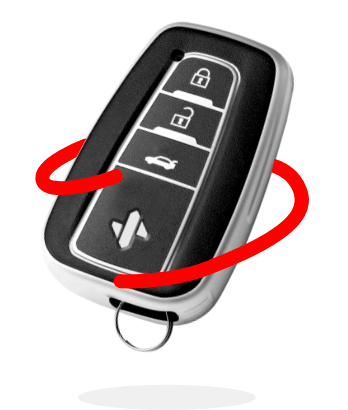Parallel parking can be a nerve-wracking experience for many drivers, especially in busy urban areas where parking spots are scarce. However, the ability to parallel park confidently is a crucial skill that can help you navigate tight spaces and find parking in challenging situations.
In this guide, we'll walk you through the step-by-step process of mastering the art of parallel parking. Whether you're a new driver, looking to improve your skills, or an experienced driver wanting to brush up on your technique, this guide has got you covered.
HOW TO PARALLEL PARK
Parallel parking is more than just maneuvering your vehicle between two parked cars — it's a strategic skill that demands finesse, patience, and an understanding of spatial awareness.
This intricate driving technique entails artfully positioning your vehicle parallel to the curb, nestled seamlessly between two other parked cars. The importance of mastering this skill becomes even more apparent in urban driving, where parking spaces are often as rare as precious gems. The hustle and bustle of city life can present a significant challenge in finding adequate parking, which is where parallel parking comes to the rescue.
STEPS TO PARALLEL PARK
1. Choose the Right Spot
Before attempting to parallel park, it's essential to choose an appropriate parking spot. Look for a space that is slightly longer than your vehicle and offers enough room to maneuver — in other words, areas with enough space to align your car with minimal adjustments. Avoid spots near intersections, fire hydrants, or other no-parking zones.
2. Prepare to Parallel Park
Show your intention: Use your turn signal to alert other drivers that you're planning to parallel park. This helps avoid confusion and ensures a smoother process.
Approach the spot: Pull up beside the car in front of the open parking space, leaving about 2 feet of space between the cars. Make sure you're not blocking traffic behind you.
Align the rear bumpers: Make sure your rear bumper is aligned with the rear bumper of the parked car.
Leave space: Leave enough room between your car and the parked cars in front and behind. This will provide the necessary space for maneuvering during the parking process.
3. Back into the Space
Check your mirrors: Use your rearview and side mirrors to monitor traffic behind you.
Begin reversing and turning: Slowly start reversing while turning your steering wheel fully to the right.
Angle your car: As you reverse, aim to position your car at a 45-degree angle to the curb.
4. Straighten Out
Align your front door: When your front door aligns with the parked car's rear bumper, straighten your steering wheel.Continue reversing: Keep reversing until your car is parallel to the curb and at a safe distance from the car behind.
5. Finishing Touches
After successfully parallel parking, there are a few parallel parking tips to consider:
Check your proximity to the curb and adjust as needed.Ensure your car is at an equal distance from the vehicles in front and behind.
Use your side mirrors and look over your shoulder to confirm proper alignment.
HOW TO TEACH PARALLEL PARKING: COMMON MISTAKES
When teaching how to parallel park between two cars, there are common mistakes to watch out for, such as:
Hitting the curb: Misjudging distance from the curb can lead to this error. Take your time and adjust as needed.Misjudging distances: It's easy to underestimate the space available. Practice helps you better gauge distances.
Forgetting to signal: Failing to use your turn signal can confuse other drivers.
To overcome these mistakes, stay patient and practice consistently.
3 PARALLEL PARKING TRICKS
Practice Makes Perfect
The old saying holds true: practice makes perfect. Head to an empty parking lot or a quiet street to practice parallel parking. Use traffic cones or markers to simulate real-world conditions. With consistent practice, your confidence and skill will improve over time.
Use Extra Caution on Hills
Parallel parking on hills or slopes requires additional considerations. To handle these situations:
Use your parking brake to prevent your car from rolling.
Adjust your approach and angle based on the slope of the road.
Be aware of traffic flow and other drivers.
Take Your Time in Tight Spaces
For tight spaces or parking between larger vehicles, take your time and make slight adjustments as needed. Also, don’t forget to use your mirrors and visibility to guide your movements.
DOES CAR INSURANCE COVER PARALLEL PARKING MISHAPS?
With parallel parking, there's always the possibility of a mishap. It's a tight maneuver, and even the most experienced drivers can make mistakes. That's where auto insurance comes in.
Whether you're trying to squeeze into a tight spot on a busy street or navigating a parking garage, the last thing you want to worry about is the cost of repairs if something goes wrong. With the appropriate insurance coverage, you can rest easy knowing that you're protected financially.
In the event of a collision, your policy can cover everything from minor scratches to more significant damage. So next time you struggle to parallel park, remember that your insurance can offer crucial peace of mind and help you navigate the aftermath with confidence.
Parallel parking doesn't have to be a daunting task. By following this step-by-step guide and practicing consistently, you'll soon find yourself parallel parking with ease. Remember that practice builds confidence, and each successful parking attempt brings you one step closer to mastering this essential driving skill.
And if you need help finding the best car insurance coverage for the best price, start by speaking to a SimplyIOA agent at 833.872.4467 or get an auto insurance quote online now.










